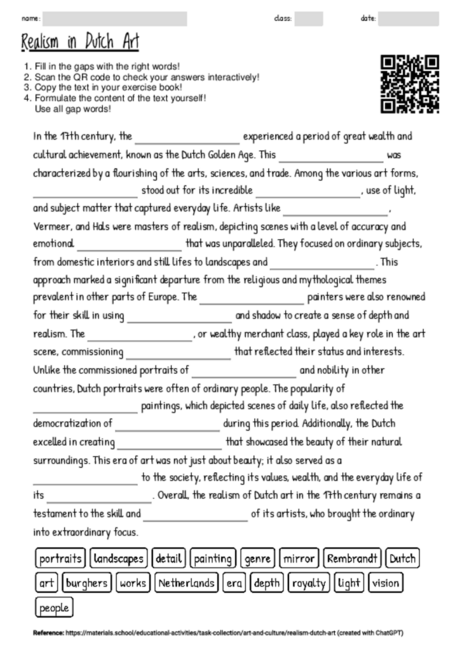Realism in Dutch Art
Cloze texts serve as an effective tool for enhancing reading comprehension and attention to detail among students, particularly in the context of learning about historical periods like the Dutch Golden Age of art. By requiring learners to fill in missing information, these texts encourage active engagement with the content, prompting students to think critically about the material and its significance. The realism of Dutch art in the 17th century, with its focus on everyday life, light and shadow, and portraits of ordinary people, offers a rich subject for exploration. Through the process of completing the cloze text, students can better appreciate the artistic techniques and social context that made this era unique. Additionally, the exercise can help in reinforcing vocabulary related to art history and cultural studies, aiding in the retention of key concepts. This method also supports the development of inferential thinking skills, as students must use clues from the surrounding text to correctly identify the missing terms. Furthermore, discussing the completed text in class can facilitate deeper discussions about the role of art in society, the evolution of artistic styles, and the historical context of the Dutch Golden Age, making the learning experience more comprehensive and engaging.

